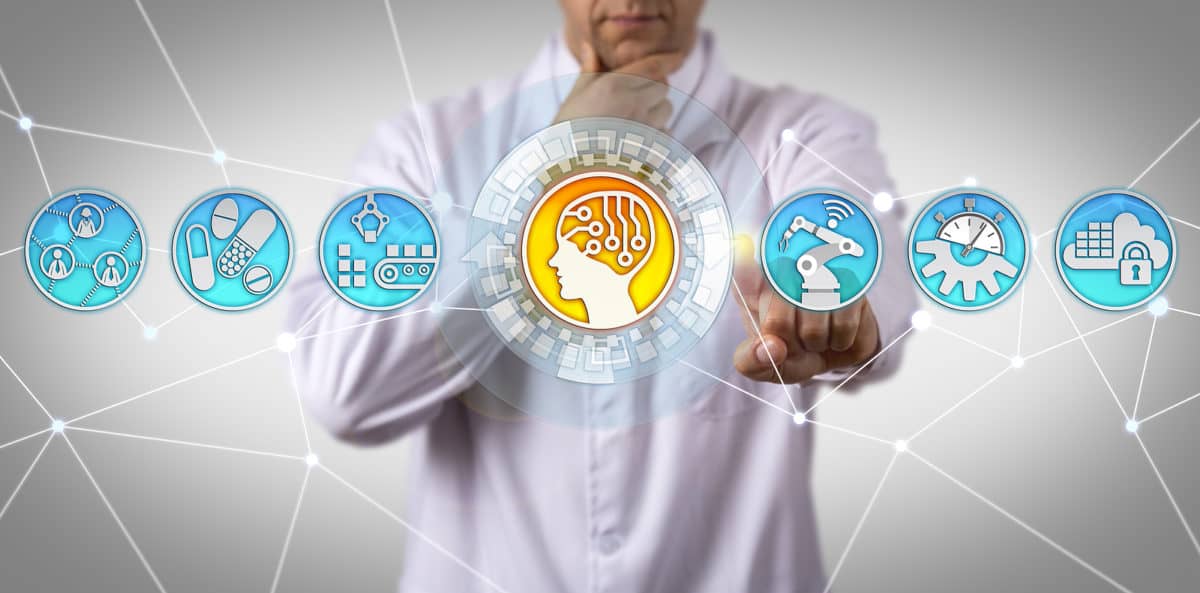
The Internet of Things, or IoT, is still an unexplored concept to some in the clinical research industry. This article is intended to demystify technical terms so readers can use them with confidence and to explain how IoT applies to other industries.
What is the IoT?
The Internet of Things is a collection of devices (‘things’) with sensors that automatically connect and exchange data with other devices or systems, over a network. Here are some real-world examples:
In the household
- Starting a car remotely from inside the house using a ‘thing ‘ e.g., a key fob, which contains a sensor that when activated (pressed), transmits a signal (via a network) to the car. The car interprets the signal and starts the engine.
- Using voice-activated technology; for example, an Amazon Echo device with the Alexa app or a Ring doorbell, these are also devices ‘things’ that accept an input (Voice or doorbell press) that then perform a data exchange e.g., a response from Alexa (audio output) or camera activation via the Ring app on a phone (visual input).
- Exercising and wearing a smart watch (a thing), it is possible to connect the watch to a phone via an app which transmits data to the app when an exercise session is saved on the watch.
In industry
Also known as ‘Industrial IoT’. There is no difference here, just a ‘thing’ (device) used in industry.
Industries that have a focus on temperature-sensitive supply chain management may use a device (‘thing’) with a sensor to monitor temperatures which sends a message (over a network) to another device (‘thing’) when needed.
- Refrigeration in clinical research for tissue sample storage is one such use.
In the clinical research industry
The protection of patient data when held on a device or ‘thing,’ and in transit over the network is of prime importance. There is more information about standardization and interoperability here.
There are many uses of such devices in the clinical research industry:
- Scanxiety is defined as the feeling of dread that many patients experience whilst waiting for scan or test results. Devices could be used to monitor those effects and take appropriate action; What impact might early intervention have across the health industry for wellbeing and mental health?
- Robotic IoT, also known as Internet of Robotic Things (IoRT), is a move from purely computer task-oriented IoT to a real world manifestation where the ‘thing’, or robot (which is really a collection of sensors exchanging data with devices around them) can also handle anticipated situations in a physical way. Robots for basic healthcare delivery in hospitals is one possible use.
Clearly, patient safety and patient confidentiality are paramount, but simple requests could be carried out and free hospital staff to complete other tasks.
Restaurants are already trialing using robots to deliver food to customers, why not consider their use in hospitals as well as in hospitality? - Virtual Care
Virtual healthcare is coming, it’s just not mainstream – yet. Virtual healthcare is not separate from traditional in-person healthcare but a joined up approach in conjunction with in-situ care.
Patients are provided with devices (‘things’): an oximeter, a blood pressure machine, a smart watch etc. The devices send data (via a network) to the hospital ward for patient monitoring. Hospital staff then respond (data exchange) as needed. This may include calling the patient – the idea is not to remove all human contact.
An advantage of virtual wards is that they challenge traditional healthcare silos (that I talked about for the Faculty of Clinical Informatics here last year) as hospitals work across healthcare providers to provide a collaborative, seamless patient experience.
Before rushing to buy ‘things’, here are three important considerations:
1) Functionality
To function, all separate components must work, devices (‘things’), sensors, apps and the network connection. If one of the devices is changed, e.g., a new smart watch, the devices will need to be re-connected. Equally, if the network connection is lost or fails, no data exchange can take place; the connection needs to be restored or fixed to resume the data exchange.
There are caveats to this, applications can run on private 5G networks with specialist infrastructure (e.g. asynchronous data replication or mirroring) with guaranteed ‘up’ time and availability. At KCR, when we use devices (‘things’), we perform a technical assessment to check all components and ensure the applications, platform, infrastructure, and service is fit for purpose with appropriate security, availability, and scalability.
2) Security
Devices (‘things’) are a common hacker’s target. If a device is not sufficiently secured, the entire network and all the devices on it are at risk.
Fortunately, minimizing the risk of being hacked is simple: use different passwords to secure devices and change passwords regularly. Make sure anti-virus software is installed and running and never write down or share passwords, or use familiar words in passwords as this makes them easy for hackers to guess.
3) Regulatory Control
IoTs in clinical research are subject to regulation. The Medicines and Healthcare products Regulatory Agency (MHRA) recently announced plans to reform medical devices regulation to improve patient health and encourage innovation. To signify products meet these standards, they will carry the new UKCA marking.
Finally, if you want to know where it all began read about it here.
About

Carolyn McNamara
Senior Manager, Technology & Innovation, KCR
Carolyn McNamara is an experienced IT leader in KCR’s Technology and Innovation team with 20+ years of experience in the technology industry; Carolyn leads Systems implementations across the KCR organization. Carolyn trained as a Computer Scientist and holds an MBA from the University of Surrey; Carolyn has extensive expertise in clinical technology, business continuity, information governance, cyber security, and corporate social responsibility & sustainability.